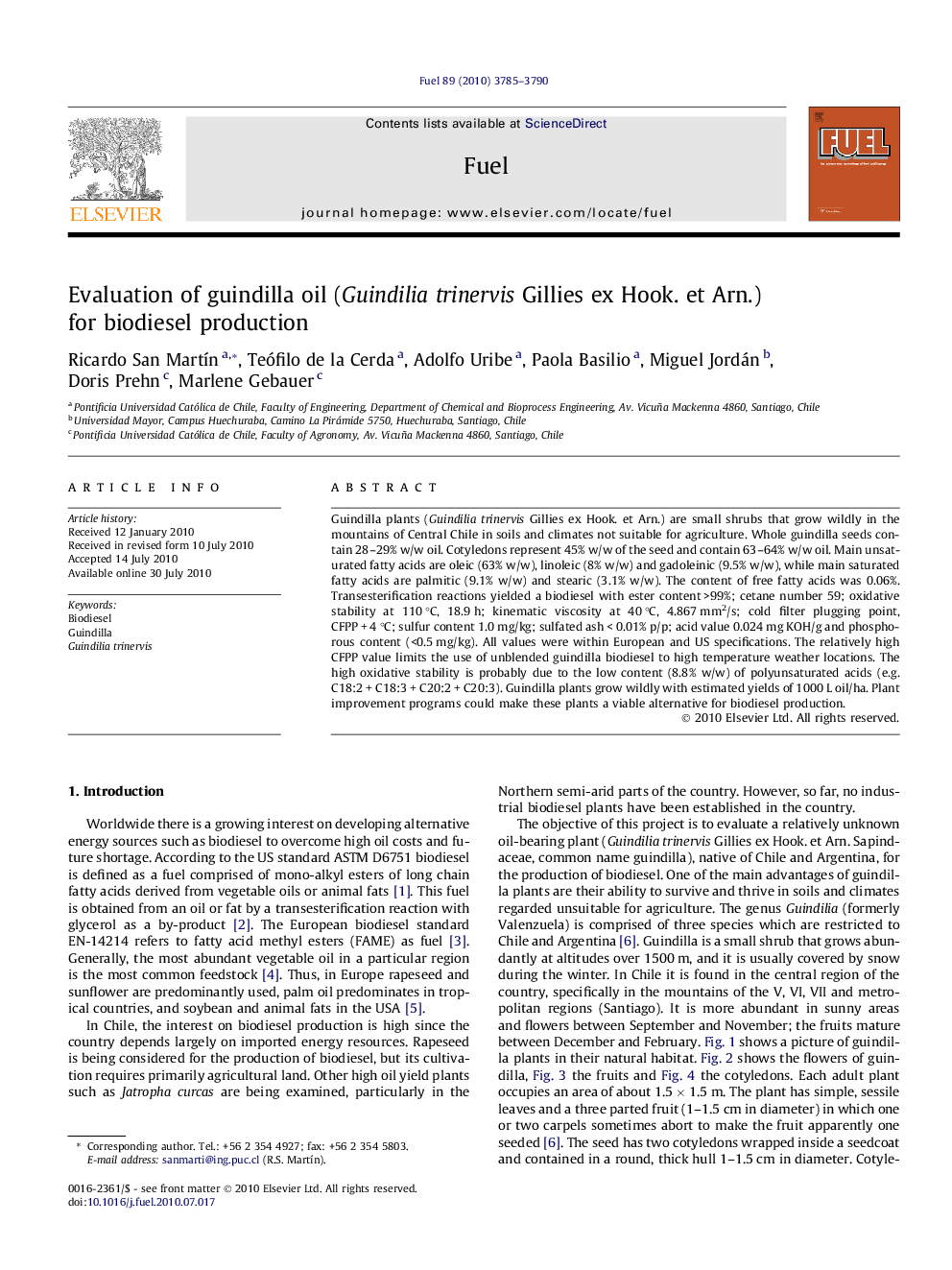| Article ID | Journal | Published Year | Pages | File Type |
|---|---|---|---|---|
| 206459 | Fuel | 2010 | 6 Pages |
Guindilla plants (Guindilia trinervis Gillies ex Hook. et Arn.) are small shrubs that grow wildly in the mountains of Central Chile in soils and climates not suitable for agriculture. Whole guindilla seeds contain 28–29% w/w oil. Cotyledons represent 45% w/w of the seed and contain 63–64% w/w oil. Main unsaturated fatty acids are oleic (63% w/w), linoleic (8% w/w) and gadoleinic (9.5% w/w), while main saturated fatty acids are palmitic (9.1% w/w) and stearic (3.1% w/w). The content of free fatty acids was 0.06%. Transesterification reactions yielded a biodiesel with ester content >99%; cetane number 59; oxidative stability at 110 °C, 18.9 h; kinematic viscosity at 40 °C, 4.867 mm2/s; cold filter plugging point, CFPP + 4 °C; sulfur content 1.0 mg/kg; sulfated ash < 0.01% p/p; acid value 0.024 mg KOH/g and phosphorous content (<0.5 mg/kg). All values were within European and US specifications. The relatively high CFPP value limits the use of unblended guindilla biodiesel to high temperature weather locations. The high oxidative stability is probably due to the low content (8.8% w/w) of polyunsaturated acids (e.g. C18:2 + C18:3 + C20:2 + C20:3). Guindilla plants grow wildly with estimated yields of 1000 L oil/ha. Plant improvement programs could make these plants a viable alternative for biodiesel production.
